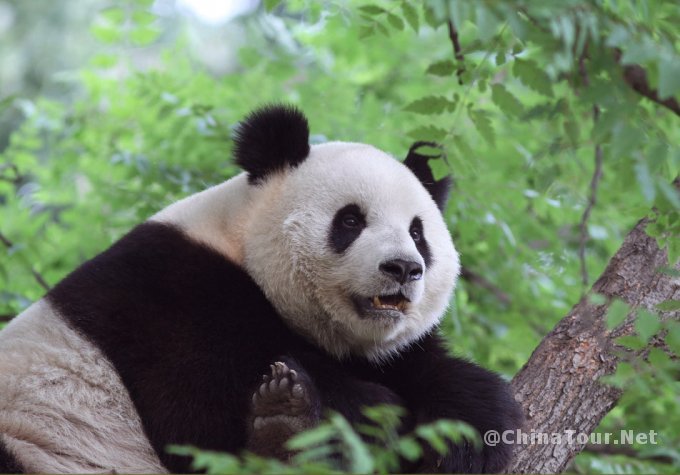Beijing Zoo is home to around 450 different species and has a population of some 5,000 animals. Some of the most popular attractions among visitors are the wild and rare animals of China itself, such as the giant pandas, golden monkeys, milu deer and northeast tigers. There are also many kinds of animals such as the polar bears, American bison, kangaroos, giraffes and elephants from other countries.
The Panda zoo lies in Beijing Zoo which was built in 1906 and opened to the public in 1908 with an area of about 10 hectares and a few humble pavilions to house the animals. At that time only several dozens of species were shown. such as lions, tigers, leopards and monkeys. Now the Beijing Zoo covers an area of about 50 hectares. The animal houses and enclosures, with a total floor space of 40,000 square metres, include those for pandas, elephants, brown and polar bears, tigers, hippopotami, rhinoceros, antelopes, giraffes and reptiles. More than 6,000 animals of over 500 species are on show. Among them are giant pandas, golden monkeys, addaxes, tigers from Northeast China, elks, yaks, precious birds and gold fish. Also on show ale rare animals from various continents, such as hippopotami, zebras, giraffes. Chimpanzees, lions and antelopes from Africa, parrots from South America, birds and kangeroos from Australia, polar bears from the Arctic, bisons from Europe and Asian apes.
Chinese Panda
(Lovely Panda eating banboo)
One of the most famous mammals in the world, the giant panda is meek and looks like a bear. With the exception of its shoulders, its limbs and the rims of its ears and eyes which are black, this lovable animal is white all over. Statistics show that China now has only approximately l,000 giant pandas living in the wild, in some remote mountain areas of Sichuan, Gansu and Shaanxi provinces.
Zoological research has proved that giant panda came into existence 600,000 to 700,000 years ago. Subsequent drastic changes in the climate resulted in deforestation which threatened its existence. The panda used to be a ferocious carnivore, but with environmental changes, it gradually became accustomed to a diet of mainly bamboo. As its natural habitation shrank, its numbers decreased, and the panda itself became docile.
To protect this rare animal, the Chinese Government has established 10 nature reserves in places where pandas are found: eight in Sichuan, one in Gansu and another in Shaanxi
In 1955, giant pandas were exhibited in the Beijing Zoo. In 1978, by artificial insemination, the female giant panda Juanjuan gave birth to twins, one of which survived. Chinese pandas now symbolize the friendship between the Chinese people and the people of other countries. They have been sent to the Democratic People’s Republic of Korea, Japan, the United States, France, Britain, the Federal Republic of Germany, Spain, Mexico and other countries.
Giant pandas live in humid and dense bamboo groves in mountainous areas at altitudes ranging from 2,000 to 4,000 metres. They are afraid of living in extreme weather conditions and make their lairs in tree holes or mountain caves. They seldom live in groups and eat bamboo leaves, sprouts and shoots. They mostly mate in April and May and give birth in autumn, with one or two cubs in each litter and occasionally three.













